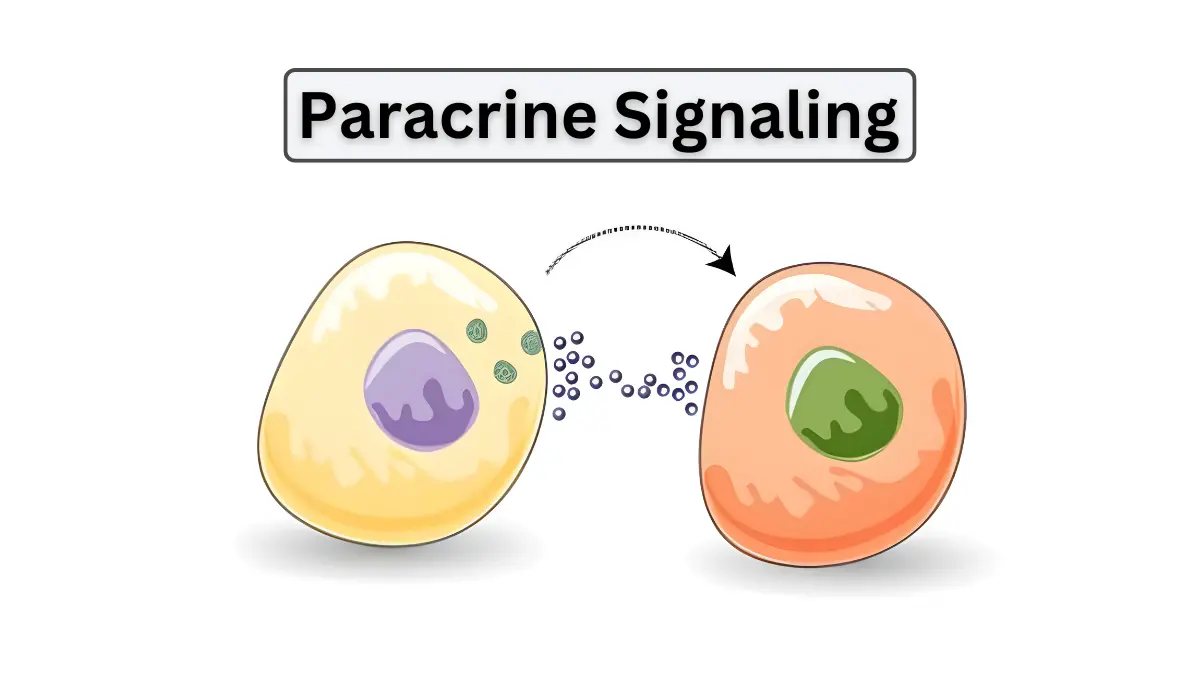
Paracrine Signaling: The Basics of Local Cell Communication
Paracrine signalling is a fundamental aspect of cellular communication that involves the transfer of signals between neighboring cells to regulate a variety of physiological processes.
This type of signaling is critical in numerous biological functions, including tissue repair, immune responses, and cellular growth and differentiation.
Understanding the Basics of Paracrine Communication
Unlike endocrine signaling, which involves hormones traveling long distances through the bloodstream, paracrine signals are localized, affecting only cells in the immediate vicinity of the signal-emitting cells.
This method of signaling is crucial for fine-tuning cellular responses in a specific tissue environment.

The Role of Growth Factors and Cytokines
Growth factors are prominent players in paracrine communication. These proteins are secreted by cells and move through the intercellular space to bind to receptors on adjacent cells, initiating a cascade of reactions that dictate cell growth, division, and repair.
Similarly, cytokines are vital for the immune response, facilitating the coordination and communication among immune cells in response to injury or infection.
Signal Transduction Pathways
The interaction between a signaling molecule and its receptor triggers a complex chain reaction known as signal transduction.
This process ultimately results in changes in gene expression, altering the cell’s behavior in response to external stimuli.
Understanding signal transduction pathways is essential for comprehending how cells adapt to changes in their environment.
Benefits of Paracrine signaling
| Benefits | Description |
|---|---|
| Coordinates Cellular Activities | Paracrine signaling orchestrates the behavior of various cells within a tissue or organ. |
| Regulates Development and Repair | Plays a crucial role in tissue development and the body’s response to injuries. |
| Maintains Organ Function | Contributes to the proper functioning of organs by enabling communication between different cell types. |
| Influences Immune Response | Paracrine signaling modulates inflammation and immune cell activity. |
| Contributes to Wound Healing | Promotes healing by influencing cell growth and other repair mechanisms. |
| May Play a Role in Cancer | Dysregulation of paracrine signaling can contribute to tumor growth and development. |
Cellular Receptors and Their Importance
Receptor proteins on the cell surface play a pivotal role in paracrine signaling.
These receptors have the specific ability to recognize and bind to signaling molecules, which activates them and triggers the intracellular signaling processes that influence cell function.
Autocrine versus Paracrine Signalling
It’s important to distinguish between paracrine and autocrine signaling. In autocrine signaling, cells respond to signals they produce themselves, while in paracrine signaling, cells respond to signals produced by nearby cells.
This distinction is crucial in various contexts, particularly in cancer research, where autocrine signaling can lead to uncontrolled cell growth.
Applications in Medical Science and Research
Paracrine signaling has significant implications in medical research and stem cell therapy treatment.
For example, understanding how cytokines contribute to inflammation and immune responses has led to the development of drugs that target specific cytokines to treat autoimmune diseases.
Exploring the Transformative Potential of Stem Cells in Medicine
How to Generate Stem Cells? The Future of Medical Science
Future Directions in Paracrine Signal Research
Ongoing research in paracrine signaling aims to elucidate more detailed aspects of cellular communication. This research holds the promise of novel therapeutic strategies for diseases that involve disrupted cellular communication, such as cancer and fibrosis.
Conclusion
Paracrine signalling remains a vital area of study in molecular biology, with its applications extending across medical science, from regenerative medicine to cancer therapy. As research progresses, the potential for new discoveries that could lead to innovative treatments continues to expand.










